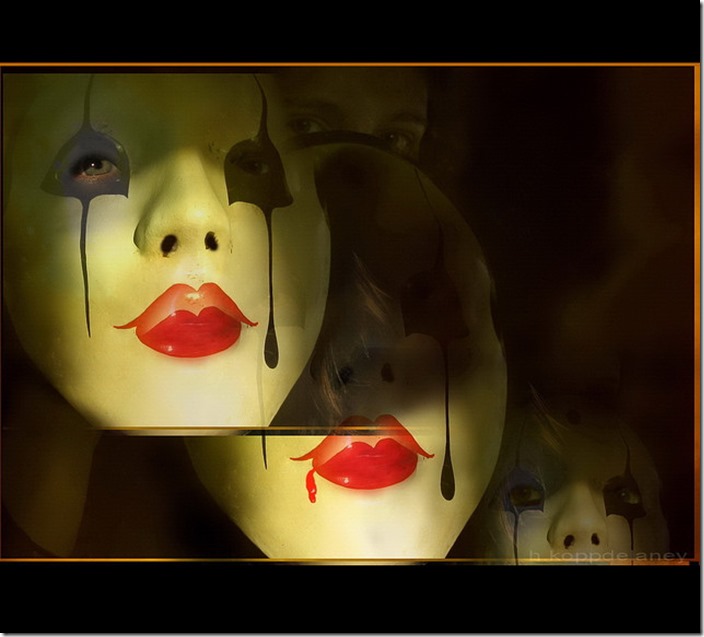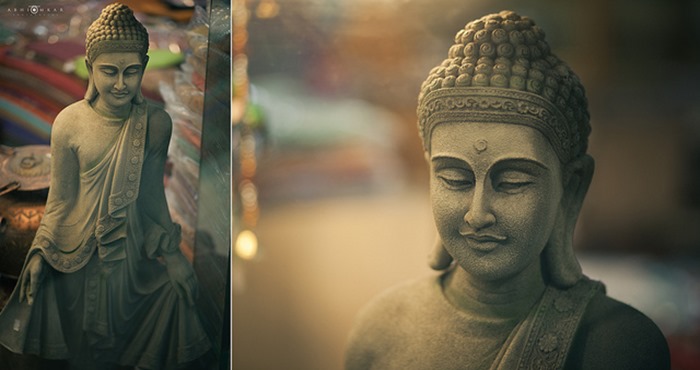Watch Your Negative Emotion – The Most Potent Transformational Tool
In the globally recognized spiritual guide The Power of Now, Eckhart Tolle, one of the most original and inspiring spiritual teachers of our time, wrote about about taking responsibility for one’s life:
 If you find your here and now intolerable and it makes you unhappy, you have three options: remove yourself from the situation, change it, or accept it totally. If you want to take the responsibility for your life you must choose one of those three options, and you must choose now. Then accept the consequences. No excuses. No negativity. No psychic pollution. Keep your inner space clear.
If you find your here and now intolerable and it makes you unhappy, you have three options: remove yourself from the situation, change it, or accept it totally. If you want to take the responsibility for your life you must choose one of those three options, and you must choose now. Then accept the consequences. No excuses. No negativity. No psychic pollution. Keep your inner space clear.
I find this advice perceptive and timeless for its simplicity. I remember before when I come to my mentor with basketful of dilemma, he often looked at me nonchalantly and asked:
-Do you have a choice?
I got frustrated by this reply sometimes. However, now I understand what that means. It is really that simple. We have a choice, no matter how frightful the situation is. And whether we exercise our right to choose or not, determines how responsible we are with our lives.
However, what stops us from taking this simple step? We all have met people who seems to never stop whining. Their lives are like Korean soap opera. Perhaps we were, or have been that person. I know. I was one, and I’m still sometimes. There is something alluring about pain. It may sound absurd at first. Who likes pain? But this is an insanely common tendency of the human mind.
Tolle refers to it as “ego identification with the pain-body”, a state in which a sense of self is derived from pain. He observes that many people have lived so closely identified with negative emotions for their whole lives, and a large part of their sense of self in invested in it. They make an unhappy self out of their pain, believe that this mind-made fiction is who they are. Then leaving the darkness of negative emotion is unbearable because of the unconscious fear of losing identity. They would rather be in the familiar darkness, be in pain, than leaping toward the unknown light.
 You are not conscious of this of course and will vehemently claim that you do not want pain. But look closely and you will find that your thinking and behavior are designed to keep the pain going for yourself and others.
You are not conscious of this of course and will vehemently claim that you do not want pain. But look closely and you will find that your thinking and behavior are designed to keep the pain going for yourself and others.
There are many contributing factors responsible for “unhappiness addiction”. Gretchen Rubin, in her New York Times bestseller The Happiness Project, provides us a list of misguided, if not dysfunctional, social perceptions and beliefs:
 Happiness is considered a trivial, unworthy goal. Pursuing happiness shows a lack of values and suffering signals depth.
Happiness is considered a trivial, unworthy goal. Pursuing happiness shows a lack of values and suffering signals depth.
 Happiness is associated with a lack of intellectual rigor. “Creativity, authenticity, or discernment, is incompatible with the bourgeois complacency of happiness” – which is proven to be wrong by scientific research.
Happiness is associated with a lack of intellectual rigor. “Creativity, authenticity, or discernment, is incompatible with the bourgeois complacency of happiness” – which is proven to be wrong by scientific research.
 Unhappiness is cooler. “There’s a goofiness to happiness, an innocence, a readiness to be pleased. Zest and enthusiasm take energy, humility, and engagement; taking refuge in irony, exercising destructive criticism, or assuming an air of philosophical ennui is less taxing.” I think this is taught to us through high school, movies and comic books.
Unhappiness is cooler. “There’s a goofiness to happiness, an innocence, a readiness to be pleased. Zest and enthusiasm take energy, humility, and engagement; taking refuge in irony, exercising destructive criticism, or assuming an air of philosophical ennui is less taxing.” I think this is taught to us through high school, movies and comic books.
 Unhappiness can be used as a tool to control others because it cries for pity, attention and special consideration, like a kid pretending to get sick in order to get special care from his mom. It can help manipulate others by provoking a sense of guilt, like a young man having to abandon his dreams because his parents constantly remind him how much they sacrificed their lives to give him good education.
Unhappiness can be used as a tool to control others because it cries for pity, attention and special consideration, like a kid pretending to get sick in order to get special care from his mom. It can help manipulate others by provoking a sense of guilt, like a young man having to abandon his dreams because his parents constantly remind him how much they sacrificed their lives to give him good education.
 Unhappiness is believed to be selfless, and happiness is seen as selfish. This is an extreme misguide because in fact “it’s more selfless to act happy. It takes energy, generosity, and discipline to be unfailingly lighthearted, yet everyone takes the happy person for granted.” Therefore people cling on negative emotions because they can’t deal with the hard work to be happy.
Unhappiness is believed to be selfless, and happiness is seen as selfish. This is an extreme misguide because in fact “it’s more selfless to act happy. It takes energy, generosity, and discipline to be unfailingly lighthearted, yet everyone takes the happy person for granted.” Therefore people cling on negative emotions because they can’t deal with the hard work to be happy.
While these distorted viewpoints are the patrons of the unhappiness addicts, their genesis lies in what mentioned above as “identification with the pain-body”. Therefore the only cure, rooted in spiritual teachings through thousands of years, is to “disidentify with the pain-body” (The Power of Now).
 The first step is to separate ourselves from our emotions. Notice how Eckhart Tolle gives “body” to “pain” in order to dissect it from the state of being. In order to disidentify with pain, a paradigm shift is required, that we must view pain as a separate organism. The pain-body – irritation, impatience, anger, rage, depression and so on – is not a part of our being but a destructive parasite that feed on our energy, like a poisonous leech sucking blood away from our system and at the same time infiltrating our inner space with negativity. Realizing this is the first step.
The first step is to separate ourselves from our emotions. Notice how Eckhart Tolle gives “body” to “pain” in order to dissect it from the state of being. In order to disidentify with pain, a paradigm shift is required, that we must view pain as a separate organism. The pain-body – irritation, impatience, anger, rage, depression and so on – is not a part of our being but a destructive parasite that feed on our energy, like a poisonous leech sucking blood away from our system and at the same time infiltrating our inner space with negativity. Realizing this is the first step.
 The second step is to observe this pain-body and see it for what it is. Word here is important. To observe is to watch something carefully and attentively, and when we are observing something, we are outside of, separated from the object. We cannot observe our own nose unless we look at our faces in the mirror. Tolle assures that the moment we observe it, feel its energy field within us and take our attention to it, the identification is broken. A higher dimension of consciousness has come in. He call it presence.
The second step is to observe this pain-body and see it for what it is. Word here is important. To observe is to watch something carefully and attentively, and when we are observing something, we are outside of, separated from the object. We cannot observe our own nose unless we look at our faces in the mirror. Tolle assures that the moment we observe it, feel its energy field within us and take our attention to it, the identification is broken. A higher dimension of consciousness has come in. He call it presence.
 The third step is to focus the attention on that feeling of pain. Acknowledge that it is there. Don’t think. Never confuse paying attention with thinking. Don’t judge or analyze because that is also thinking. Why?
The third step is to focus the attention on that feeling of pain. Acknowledge that it is there. Don’t think. Never confuse paying attention with thinking. Don’t judge or analyze because that is also thinking. Why?
Thinking allows further dwelling in pain and perpetuates adverse patterns. To think in the midst of negative emotions is harmful, regardless of the subject: how dreadful our life is, how awful a person is, why the situation become like this, or even what we are going to do to a person or a situation. Negative emotions is the poisonous mud that can only grow poisonous plants. Nothing beautiful can spring from that place. So we must get ourselves out of this mud first before we can move forward.
Stay present and continue to be the watcher of what is happening inside. And don’t forget to breathe. You will ultimately disidentify from the pain-body, and negative emotions will be dissolved. I have experience this firsthand and have used it repeatedly. This is simple, yet profoundly powerful. The only way to understand this tool is to experience it. I can’t agree further with Tolle when he says that this is the most potent transformation tool.
 There are emotions that are more difficult to handle than others. Pain-bodies that rooted in our childhood, our obsessions, our frightful experiences, our deepest fear; those are vicious and detrimental monsters, when provoked and they can be drive us physically or emotionally violent to ourselves and to people around us if not being disidentified with and dissolved. Here are two real examples:
There are emotions that are more difficult to handle than others. Pain-bodies that rooted in our childhood, our obsessions, our frightful experiences, our deepest fear; those are vicious and detrimental monsters, when provoked and they can be drive us physically or emotionally violent to ourselves and to people around us if not being disidentified with and dissolved. Here are two real examples:
I live in Hanoi, where the traffic is notoriously chaotic. Driving is not fun, especially during rush hour. Whenever I heard loud honking from other cars and motorbike, or being startled by a near-accident contact with careless drivers, I felt very irritated. I taught myself to calmly watch this emotion when I drive, instead of thinking how bad the traffic is, how barbaric most drivers are, or how much I miss Europe, and beginning to curse and hate everything. Driving is still not what I love, but I definitely gain much less stress, and I know also safety. This is an example of an every day, simple pain-body.
I was once in a bus that involved in severe accident. That accident caused one death, one person severely injured. I know them both. I have never quite gotten over it. Strong shuddering in a public transport, airplane turbulence for instance, can trigger a panic attack. This pain-body is much more difficult, but the cure is the same. Even though it takes more time to dissolve , it has never failed to get me out of the dark.
So remember, get yourself out of the dark. When you are baffled by your own pain, when you feel as if you are taking an endless walk through hell, look in the mirror and ask:
- Do you have a choice?
You always do.

For more on inner peace, mindfulness and modern spirituality, try out Want to Change the World? Mediate and Wash these Dishes and Are We All Connected?
Like what you read?




